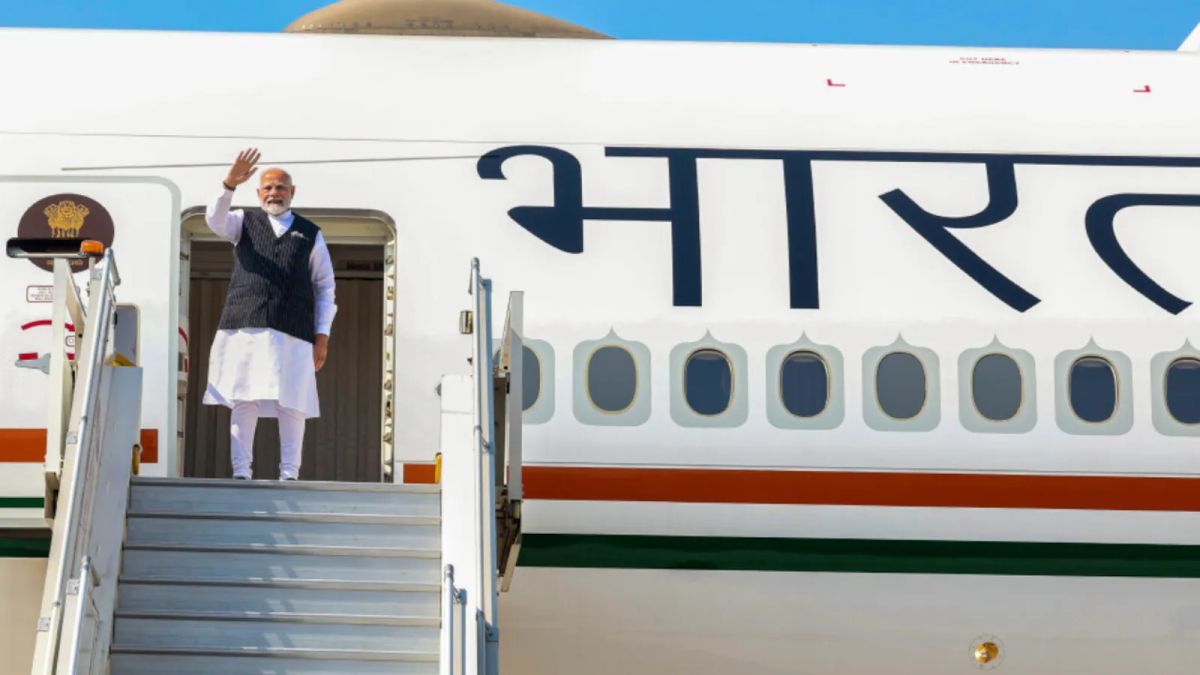Prime Minister Narendra Modi is on his way to Russia to attend the 16th Brics Summit. Earlier, the Ministry of External Affairs (MEA) announced that the Indian leader will participate in the summit being held in the Tatarstan capital of Kazan along the Volga River on October 22-23.
Modi is also “expected to hold bilateral meetings with his counterparts from Brics member countries and invited leaders,” the MEA said. However, it is not yet clear whether the PM will hold a meeting with Chinese President Xi Jinping on the sidelines.
Commenting on the Brics summit, the MEA said, “The Summit, themed “Strengthening Multilateralism for Just Global Development and Security,” will provide an important platform for leaders to discuss key global issues.”
“The Summit will offer a valuable opportunity to assess the progress of initiatives launched by Brics and to identify potential areas for future collaboration,” it added.
This is PM Modi’s second trip to Russia this year after he visited Moscow in July for the 22nd India-Russia Annual Summit. He had also convened a bilateral meeting with Russian President Vladimir Putin at the time.
What is Brics and why does the bloc matter to India? We will explain.
What is Brics?
Brics is an informal group comprising Brazil, Russia, India, China and South Africa.
In 2001, Jim O’Neill, an analyst at Goldman Sachs, coined the term Bric to describe the emerging economies of Brazil, Russia, India, and China. Embracing the term, the first Bric Summit was held in Yekaterinburg, Russia, on June 16, 2009.
The group was formed to bring together the fastest-growing developing countries, to address their concerns and counter international institutions dominated by Western powers.
It became B rics n 2010 with the joining of South Africa.
Earlier this year, the bloc welcomed five new members – Egypt, Ethiopia, Iran, Saudi Arabia, and the United Arab Emirates (UAE).
The expanded group has a combined population of about 3.5 billion, or 45 per cent of the world’s population. The combined economies of the member states are worth more than $28.5 trillion, about 28 per cent of the global economy.
With Iran, Saudi Arabia and the UAE becoming members, Brics countries produce 44 per cent of the global crude oil.
As per an Observer Research Foundation (ORF) article, the grouping is evolving from a geoeconomic framework to a geopolitical force. This can be seen from the recent expansion of the bloc.
Brics aims to establish an “open, transparent, inclusive, non-discriminatory and rules-based multilateral trading system”. They seek to edge out the US dollar in international trade. For this, the member countries have been pushing for the use of national currencies for trade between them.
Despite talks, a common Brics currency seems evasive as of now.
The significance of Brics for India
India remains committed to global forums like Brics. New Delhi has been calling for “a multipolar world” where the international order is not dominated by the West.
At the 2023 Brics Foreign Ministers Meeting, External Affairs Minister S Jaishankar said that “the Brics gathering must send a message that the world is multipolar, that it is rebalancing, and that old ways cannot address new situations.”
According to the ORF article, India has been using multilateral forums to boost its standing on the world stage. For New Delhi, Brics offers a platform to raise the voice of the Global South.
Jagannath Panda, head of the Stockholm Center for South Asian and Indo-Pacific Affairs at the Institute for Security and Development Policy, said in an article for the United States Institute of Peace (USIP), “India sees Brics and its expansion as a multipolar base to expand its economic outreach in the Middle East [West Asia] and beyond.”
As per The Diplomat, Brics’ diplomacy focuses on development that fits with India’s core interests – energy security, fighting terrorism, and climate change financing.
The bloc tries to amplify non-traditional security threats and encourage economic security. “It has mainstreamed non-traditional threats as part of a broader security agenda, which is often missing in global discussions,” as per The Diplomat piece. The grouping presents the socioeconomic realities of the developing world which are often ignored by the Global North.
Brics reflects India’s interests, including reforms in multilateral forums like the International Monetary Fund (IMF), World Trade Organization (WTO), United Nations and UN Security Council.
India’s shift to a multi-alignment foreign policy helps it be a part of a Western grouping like QUAD (Australia, India, Japan, and the United States) and non-Western blocs like BRICS. “For New Delhi, Brics provides significant leverage for promoting India’s global leadership aspirations, as well as strategic autonomy and multipolar vision both in the West and the Global South. The optics of India as a bridge between Western (like the QUAD) and non-Western forums, or even a participant in both, creates a favourable impression about its bargaining capacity,” Panda said.
With inputs from agencies
)